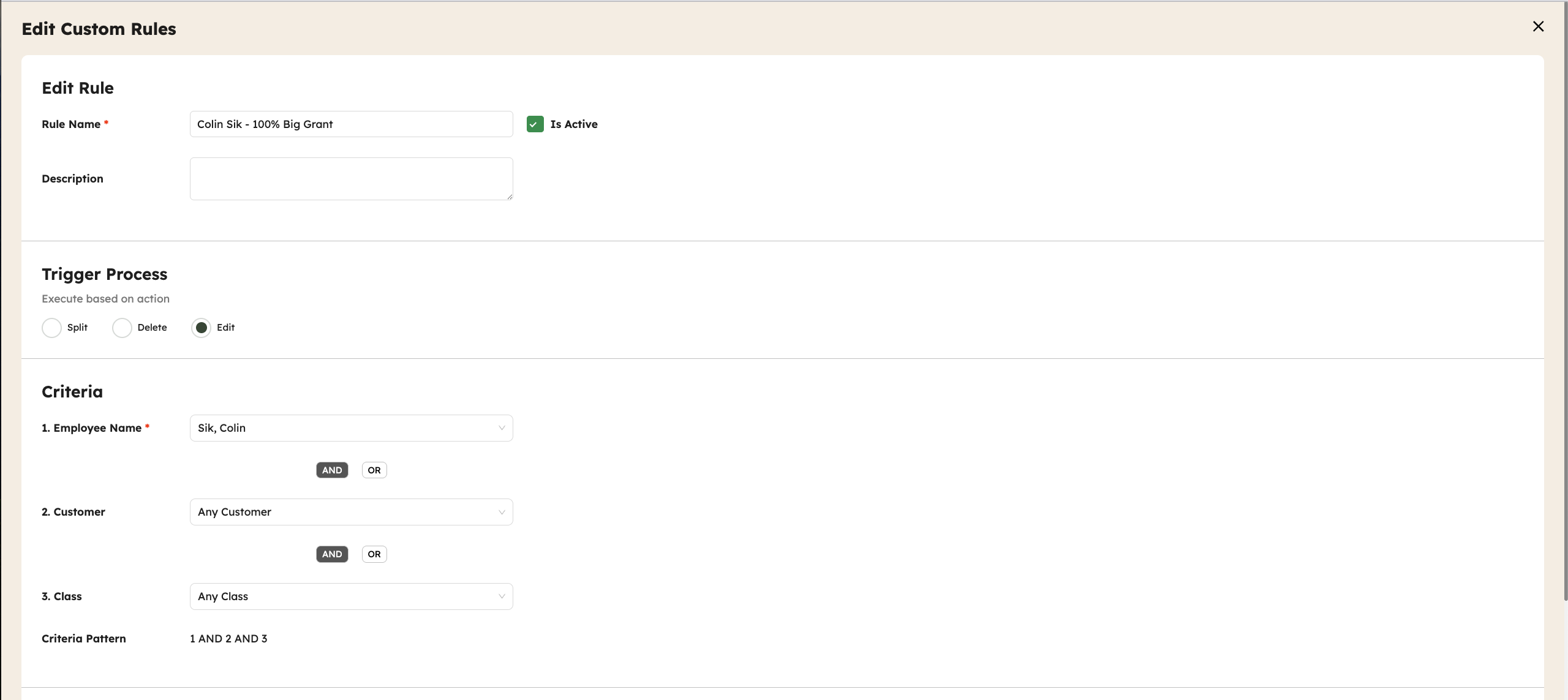Introduction
Custom Rules in Cost Allocation Pro (CAP) help streamline the allocation process by automating edits to employee time data. By setting up specific criteria, you can reduce manual edits, saving time and ensuring accuracy in your allocations. This guide will walk you through the types of Custom Rules available, their purpose, and how to create them.
Accessing Custom Rules
To begin, navigate to the Settings menu in CAP, where you’ll find the Custom Rules feature. This tool allows you to set up rules for modifying employee time data based on specific criteria.


Types of Custom Rules
There are three types of Custom Rules in CAP:
1.Split Rule
Splits a single time entry into multiple entries.
Define percentages to allocate time across various customers and classes.
2.Edit Rule
Finds and replaces specific customer or class selections in time entries.
Useful for correcting common misallocated time entries.
2.Delete Rule
Sets specific time entries to zero based on your criteria.
Ideal for removing incorrect or unnecessary entries.
Example: Correcting Employee Time Entries
Consider the following scenario:
An employee, Colin Sick, routinely codes their time to the wrong customer. Colin’s time should always be coded 100% to the customer Big Grant. You can use the Edit Rule to automate this correction.
Step-by-Step Instructions to Create an Edit Rule
1.Add a New Rule
In the Custom Rules screen, click the Add Rule button.
2.Name the Rule
Enter a meaningful name, e.g., Colin Sick, 100%, Big Grant.
Optionally, add a description for clarity.
3.Select the Rule Type
Choose Edit as the type of rule.
4.Set Criteria
Define the conditions for applying the rule:
Select Colin for the employee name.
Use the And option to specify that all criteria must match.
Set Any Customer as the customer.
Add another And option and select Any Class for the class.
5.Define Actions
Specify how the time entry should be recorded:
Select Big Grant as the customer.
Choose Community Service as the class.
6.Save the Rule
Click Save to finalize the rule.


How the Rule Works
Once created, the rule will automatically adjust Colin’s time entries. Regardless of the customer or class Colin selects, CAP will reassign his time to Big Grant as the customer and Community Service as the class.
Benefits of Custom Rules
Automation: Reduces manual adjustments to time data.
Accuracy: Ensures time entries are properly allocated.
Efficiency: Speeds up the allocation process by handling repetitive tasks.
By using Custom Rules, you can focus on more strategic tasks while CAP handles the details of time data corrections.
Start implementing Custom Rules today and experience the full efficiency of Cost Allocation Pro!
